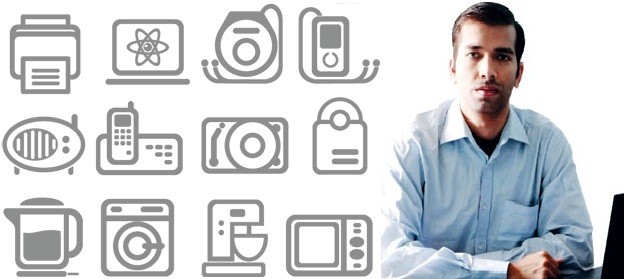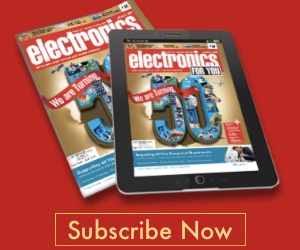If you were tracking our stories, you would know how a product conforms to the IoT criteria. Now, it is time to move forward so you can actually build a product for IoT. T. Anand, managing director of Knewron, discusses with Dilin Anand from EFY some basic elements and building blocks for IoT-based products
T. Anand, managing director, Knewron
Q. For the uninitiated, could you describe the primary building blocks of an IoT system?
system?
A. The Internet of Things primarily needs three building blocks to make it functional. These are, a ‘thing’ itself, which could be a door-lock or water-tank, etc; a connecting mechanism, such as RF transmitter/receiver, NFC, Bluetooth, etc; and a stable and secure communication method or protocol. In order to make an IoT product, converting it into a useful and meaningful application is going to be the key.
Q. What are the fundamental elements that any IoT designer should first understand?
A. Technically, it is easier to make a product and have RF or Bluetooth connectivity built into it. However, that does not necessarily make it an IoT-enabled product. Because the application that product serves doesn’t dictate so. From a designer’s perspective, security, identity management, semantics, compatibility with multiple communication standards, lower power, lower costs and nil or least interference would be the major criterion for IoT-based products. In some very specific cases, safety will also be a significant factor to be considered. Interestingly, designers also need to answer many trivial but critical questions, such as: What would smartphones, TVs, refrigerators, cars, locks and smart clothes, and whatever else, would talk about with each other?
Q. Should the designers wait for more suitable chip technologies?
A. People are not waiting for technologies since there is no ‘starting point’ for IoT devices. These are being designed and developed continuously with recursive modifications as and when newer technologies become available. If we wish chip designers to integrate some critical protocol into their hardware design, developers need to start making and using it in software form for some time. On the other hand, if chip designers create some enabler for better use of technology, developers would prefer to use it rather than re-invent the wheel.
Q. What would be the top two things on an IoT product designer’s wish-list of IP?
A. Developers have embraced a plethora of incompatible protocols for communicating with their devices. As a result of that, devices connected to the Internet often can’t speak to each other, even if they want to. Protocol therefore is a prime need to be addressed at this stage. Such protocols and mechanisms or semantics could take shape of IP in coming days. Processors, on the other hand, are delivery mechanisms for the IPs. For instance, a processor can have ubiquitous protocol built in its hardware to enable IoT-based devices and applications deliver more value at lesser cost. Built-in communication stacks could be a great advantage in designing and building IoT-based devices or systems since major time is usually spent in integration of protocol stacks with external things.
Q. Could you share some insight into security, or the lack of it, in IoT?
A. As I foresee, most of the security issues would be related to intercommunication between things (or devices) connected on network, where alteration of data and information might occur. This alteration or interference could further result into misrepresentation of things, disruption in interconnected systems or even some unprecedented stoppage of certain work. And the best way to address most of the issues would be to take pre-emptive actions in design phase of these applications, protocols, methods, etc. Through multilayer device design approach, threats could be contained on the outer levels, which could add to safety of the device.
Q. Which areas are gaining in value, and which ones are on the losing side?
A. Well, sensors are the future of distributed data. We are starting to move a sea of data, have our movements monitored and our environments measured and adjusted to our preferences, without need for direct intervention. This means new opportunities for sensor designers, active sensor mechanisms and wireless technology/protocol developers. Additionally, as general-purpose computing is becoming a thing of the past, most of the things that are based on it would start becoming smaller and then disappear. The industrial internet means that machines will no longer be constrained by the quality of their on-board intelligence.














